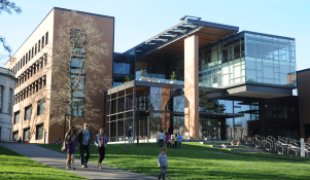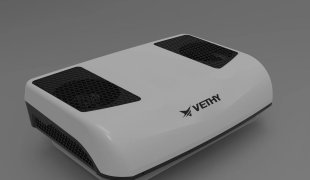What are the advantages of twin-rotor compressors over single-rotor compressors?
October 31, 2024
I. Introduction
The World of Compressors
Compressors are required to reduce gases and deliver them at higher pressures, which is essential in uses that include refrigeration to pneumatic equipment. As innovation has improved, new types of compressors have emerged, each tailored to certain necessities for operation.
Understanding Compressors
Compressors are machines that compress the volume of a gas in order to increase its atmospheric pressure. They operate by taking in a low-pressure gas and condensing it to produce high-pressure destination gases, which may then be used for a variety of applications.
Types of Compressors
There are several types of compressors in the marketplace, such pistons compressors, rotary needle compressors, compressors with centrifugal force, and others. Twin-rotor and single-rotor compressors, in particular, are gaining popularity due to their innovative designs and dependability in use.

II. The Basics of Twin-Rotor and Single-Rotor Compressors
What Are Twin-Rotor Compressors?
Twin-rotor compressors use two rotors that rotate in opposite instructions to compress propane. This design allows for a more efficient the compression handle compared to single-rotor compressors. Twin-rotor compressors are frequently discovered in high-performance applications where productivity and honesty are essential.
Structure and Function
A twin-rotor compressor comprises two intermeshing rotors included within a casing. The rotors turn, creating low-pressure gaps that pull gas from the input. As the rotating components continue to turn, the gas gets squashed and discharged into the outlet port under high pressure.
Applications of Twin-Rotor Compressors
Twin-rotor compressors have been used for a number of reasons, including HVAC systems to cool homes and offices, car air conditioners for comfort, and refrigerated equipment for food processing and preservation.
What Are Single-Rotor Compressors?
Single-rotor compressors compress gas as it travels through the system's components. Although they have less complexity than twin-rotor compressors, they may not give the same degree of economy or efficiency.
Structure and Function
A singlerotor compressor has one rotor that revolves within a casing, creating a vacuum that sucks gas from the inlet and compresses it as it goes through the compressor before being discharged.
Applications of Single-Rotor Compressors
Single-rotor compressors are commonly used in applications such as:
· Small HVAC Systems: Suitable for residential air conditioning units.
· Portable Refrigeration Units: Often found in smaller refrigerators or freezers.
III. Efficiency Comparison
Efficiency Amplified
One of the most notable advantages of twin-rotor compressors over single-rotor compressors is increased efficiency. Twin-rotor compressors are often more efficient due to their design and operational features.
Smoother Compression Process
The dual rotor design allows for more responsive operation than single-rotor variants. This reduces vibration and noise while functioning, resulting in a happier atmosphere for users.
Energy Savings and Operational Costs
Twin-rotor compressors' higher efficiency leads to over time energy savings. These air conditioners can help businesses and homeowners save money on expenditures for operation since they use less energy for the same output.
The Science of Efficiency
Understanding how efficiency is measured can help clarify why twin-rotor compressors outperform their single-rotor counterparts.
Energy Loss in Single-Rotor Compressors
Single-rotor compressors often experience energy losses due to their design limitations. These losses can occur during compression cycles due to inefficiencies in how the gas is moved through the system.
Energy Conservation in Twin-Rotor Compressors
In contrast, twin-rotor compressors minimize energy loss through their advanced design features. By optimizing airflow and reducing friction between components, these systems can operate more efficiently while providing superior performance.
IV. Vibration and Noise Reduction
Balanced Power and Vibration
Vibration is a prevalent concern in mechanical systems, particularly in compressors. Excessive movement can cause wear and tear on parts over time, leading to decreased efficiency and higher maintenance costs.
Impact of Vibration on Equipment Life
Vibration can diminish a compressor's lifespan while also reducing its performance. Persistent vibrations can create wear or alignment issues in components, resulting in premature failure.
Noise Reduction in Industrial Settings
In industrial applications where compressors operate continuously, noise reduction becomes critical. Twin-rotor compressors typically produce less noise during operation due to their balanced design.
How Twin-Rotors Minimize Vibration
The twin rotor design inherently balances forces during operation, significantly reducing vibration levels compared to single-rotor designs.
Synchronization of Rotating Components
The synchronized rotation of twin rotors ensures that forces are evenly distributed throughout the compressor housing. This balance minimizes vibrations that can lead to noise or mechanical failure.
Advanced Vibration Damping Techniques
Many manufacturers incorporate advanced vibration damping technologies into their twin-rotor designs. These features further reduce noise levels while enhancing overall system performance.
V. Capacity and Air Flow
Increased Capacity and Air Flow
A key aspect of twin-rotor compressors is their ability to produce higher capacity and airflow compared to single-rotor variants.
Meeting High Air Demand
In applications where high airflow is essential—such as large commercial spaces or industrial settings—twin-rotor compressors excel at meeting these demands without compromising performance.
Consistent Supply of Compressed Air
Twin-rotor systems provide a consistent supply of compressed air even under varying load conditions. This reliability makes them ideal for applications requiring steady airflow throughout operations.
The Role of Capacity in Industrial Operations
Capacity plays an important component to determine how successfully an air conditioning system meets operating needs across various sectors.
Heavy-Duty Applications
In harsh environments such as factories or warehouses where huge amounts of air need to be moved quickly—twin-rotor compressors provide a successful approach that guarantees optimum efficiency with no consuming too much energy.
Large-Scale Production Needs
For businesses engaged in large-scale production processes requiring constant airflow—investing in twin-roto compressor technology can significantly enhance productivity while minimizing costs associated with downtime or inefficiencies experienced with traditional systems!
VI. Flexibility and Adaptability
Flexibility in Varying Operational Needs
Twin-roto compressor technology offers remarkable flexibility when it comes adapting operations based upon changing demands! Whether facing fluctuating temperatures or varying workloads—these systems can adjust accordingly without sacrificing efficiency!





